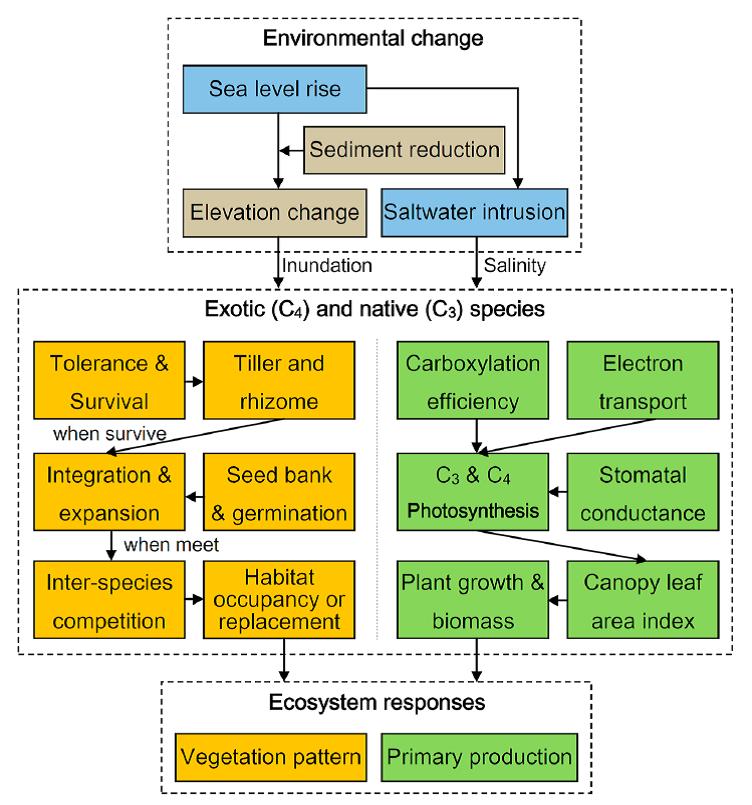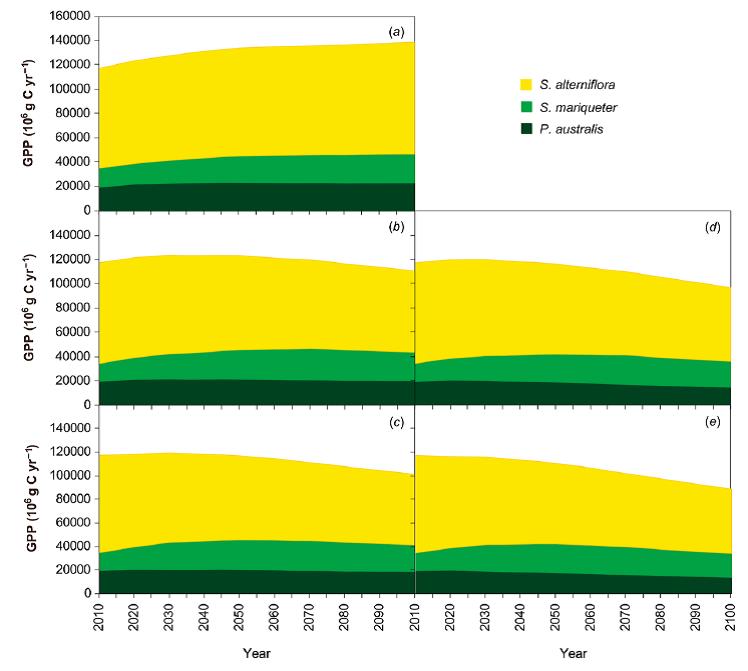Future vegetation patterns and primary production in the coastal wetlands of East China under sea level rise, sediment reduction and saltwater intrusion
To explore the effects of sea level rise (SLR), sediment reduction (SR), and saltwater intrusion (SWI) on the vegetation patterns and primary production of one exotic (Spartina alterniflora) and two native dominant (Scirpus mariqueter and Phragmites australis) species in the coastal wetlands of East China, range expansion monitoring and stress experiments were conducted, followed by model prediction. After a rapid invasion period, the expansion rate of S. alterniflora slowed down due to the decreasing availability of suitable habitat under prolonged inundation. SLR was shown to decrease the colonization of S. alterniflora and the native P. australis up to 2100. In contrast, the native S. mariqueter that has a high tolerance of inundation increased in area following SLR, due to a reduction in competition from S. alterniflora in low-lying habitats and even recolonized areas previously invaded by the exotic species. The combination of SLR and SR resulted in further degradation of S. alterniflora and P. australis, while the area of S. mariqueter was not reduced significantly. The decrease in the area of vegetation would reduce the gross primary production under SLR and SR. SWI exacerbates the impacts, especially for P. australis, because S. alterniflora and S. mariqueter have a higher tolerance of salinity. Thus, the coastal vegetation pattern was predicted to be modified due to species-specific adaption to changed geophysical features. This study indicated that the native species better adapted to prolonged inundation and increased salinity might once again become key contributors to primary production on the muddy coasts of East China.
Fig. 3. Model framework for estimating the effects of SLR, SR, and SWI on vegetation pattern and primary production in the coastal wetlands.
Fig. 11. Predicted gross primary production (GPP, combination of the CDW and JW) of S. alterniflora, S. mariqueter, and P. australis over the simulation period from 2010 to 2100 under the (a) current and (b–e) changed (SLR, SLR+SR, SLR+SWI, and SLR+SR+SWI) scenarios.
List of relate results:
-
Journal of Geophysical Research: Biogeosciences ,
2015 ,
120
: 1923-1940


